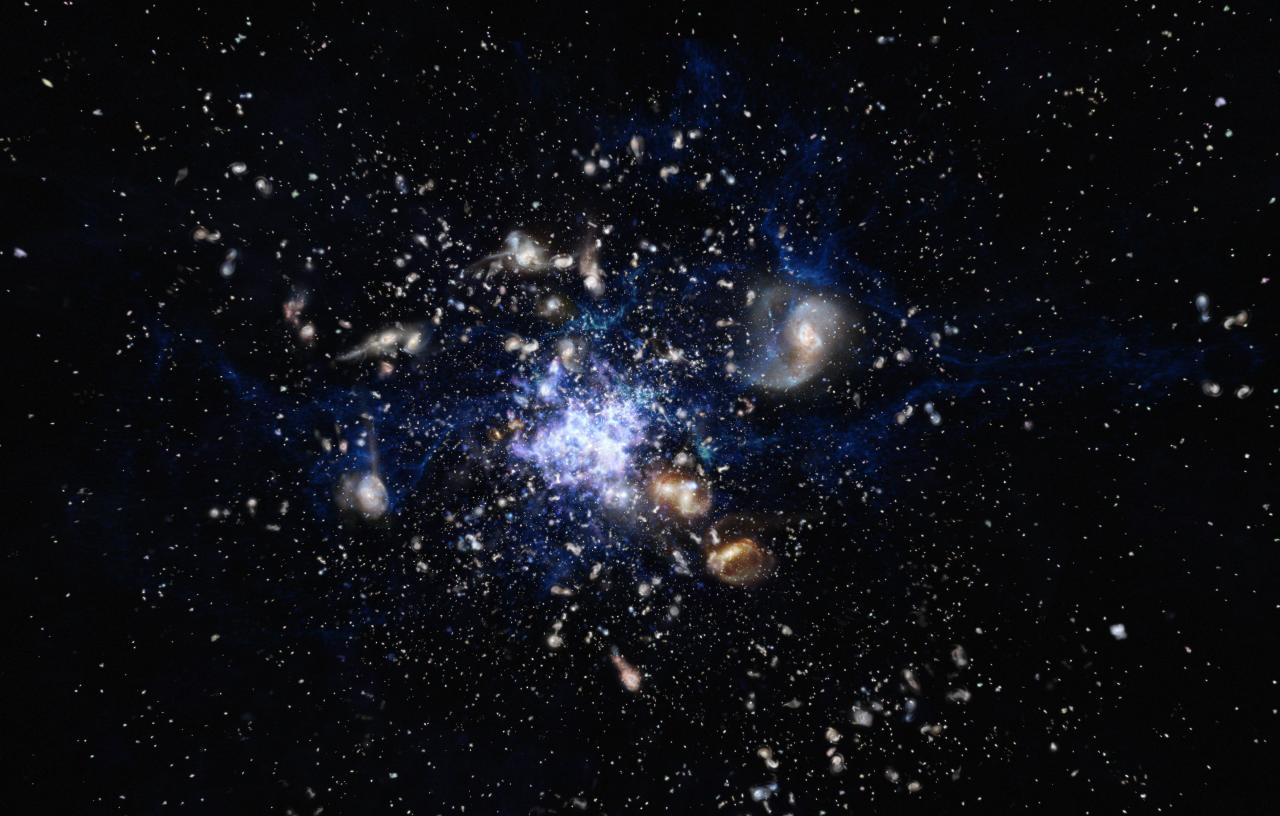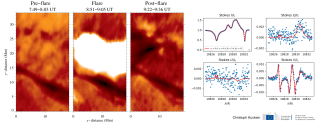Grants related:
General
Two of the most fundamental questions in astrophysics are the conversion of molecular gas into stars and how this physical process is a function of environments on all scales, ranging from planetary systems, stellar clusters, galaxies to galaxy clusters. The main goal of this internal project is to get insight into the formation and evolution of galaxies from the cold interstellar medium. This is achieved by probing the cold molecular gas, the fuel of star formation, and dust, the by-product of this formation process, in galaxies across cosmic time. The studies are mainly based on observations in the far-infrared and radio wavelength regime with a special focus on radio interferometric observations with state-of-the art telescopes such as NOEMA, ALMA, ATCA, VLA and SMA. There will be close interrelation with other internal research projects e.g., providing our expertise on radio (interferometric) observations of galaxies. The research group will characterize the star-formation properties of massive galaxies in the distant universe at different epochs enabling us to study the formation sequence of star-forming galaxies. Furthermore, to probe the environmental-dependent evolution, the investigated sources are selected from galaxy clusters and the field. In addition, complementary studies of nearby galaxies (selected from CALIFA and WEAVE-APERTIF) serve as a local reference sample for future studies of high-redshift galaxies.
Members
Results
- Follow-up observations of a lensed dusty starburst galaxy at z=2.04 with the radio interferometer IRAM NOEMA discovered extreme molecular gas properties and revealed the brightest emission in molecular gas ever seen in the distant universe; Dannerbauer et al. 2019, AJ, in press (astro-ph/1812.03845)..
- Contrubution with several articles as co-author (part of international collaborations) of the study of galaxy cluster in formation and its members via multi-wavelenth observations.
- Obtaining external funding from 'plan nacional' by MINECO for 2018 and 2019 including funding of a two-years postdoc (AYA2017-84061-P: ´From the first over-densitities to proto-clusters and clusters: The role of the environment´, 141.570 Euro, IP1: H. Dannerbauer, IP2: J. M. Rodriguez-Espinosa).
- Obtaining observing time to continue and the finish the ATCA Large Program 'COALAS: CO ATCA Legacy Archive of Star-Forming Galaxies' (PI: Helmut Dannerbauer), in total 640 hrs. (~500.000 Euro). IRAM NOEMA Large Program ‘A Comprehensive NOEMA Redshift Survey of the Brightest Herschel Galaxies’ (CoPI: Dannerbauer) approved, 191 hrs. (~770.000 Euro).
- Organization of the mini-synposium 'Build-Up of Galaxy Clusters' during the IAU XXX General Assembly in Vienna in August 2018 and of the splinter meeting "Collaborative GTC-LMT project" during the GTC conference in Valencia in December 2018.
Scientific activity
Related publications
-
The Interstellar Medium in High-redshift Submillimeter Galaxies as Probed by Infrared Spectroscopy*
Submillimeter galaxies (SMGs) at z≳ 1 are luminous in the far-infrared, and have star formation rates, SFR, of hundreds to thousands of solar masses per year. However, it is unclear whether they are true analogs of local ULIRGs or whether the mode of their star formation is more similar to that in local disk galaxies. We target these questions by
Wardlow, J. L. et al.Advertised on:
32017 -
The Herschel-ATLAS: a sample of 500 μm-selected lensed galaxies over 600 deg2
We present a sample of 80 candidate strongly lensed galaxies with flux density above 100 mJy at 500 μm extracted from the Herschel Astrophysical Terahertz Large Area Survey, over an area of 600 deg2. Available imaging and spectroscopic data allow us to confirm the strong lensing in 20 cases and to reject it in one case. For other eight objects, the
Negrello, M. et al.Advertised on:
32017

![Izquierda - Imagen RGB de la nebulosa de Orión y M43 obtenida filtros estrechos con la cámara WFC en el INT: H alfa (rojo), [S II] 6716+30 (verde), [O III] 5007 (azul). Derecha - Imagen en falso color de la nebulosa planetaria NGC 6778. En azul se ve la emisión en la línea de O II tomada con el filtro sintonizable azul del instrumento OSIRIS en el GTC; en verde imagen con el filtro estrecho de [O III] del Nordic Optical Telescope (NOT). Izquierda - Imagen RGB de la nebulosa de Orión y M43 obtenida filtros estrechos con la cámara WFC en el INT: H alfa (rojo), [S II] 6716+30 (verde), [O III] 5007 (azul). Derecha - Imagen en falso color de la nebulosa planetaria NGC 6778. En azul se ve la emisión en la línea de O II tomada con el filtro sintonizable azul del instrumento OSIRIS en el GTC; en verde imagen con el filtro estrecho de [O III] del Nordic Optical Telescope (NOT).](/sites/default/files/styles/crop_square_2_2_to_320px/public/images/project/imagen_web.jpg?itok=fsBmV9CO)

